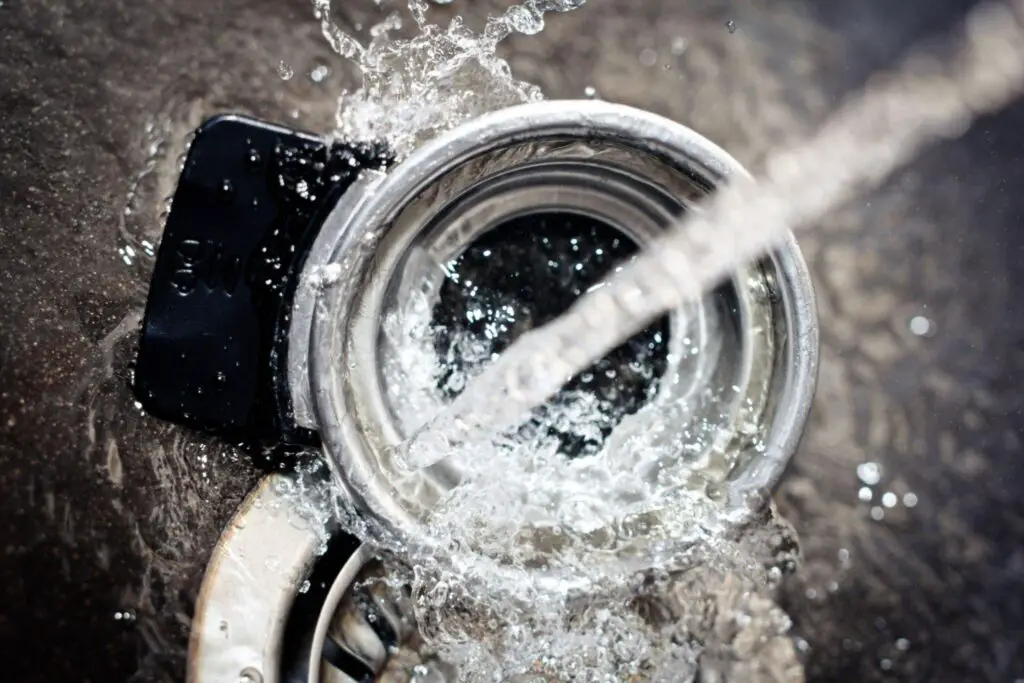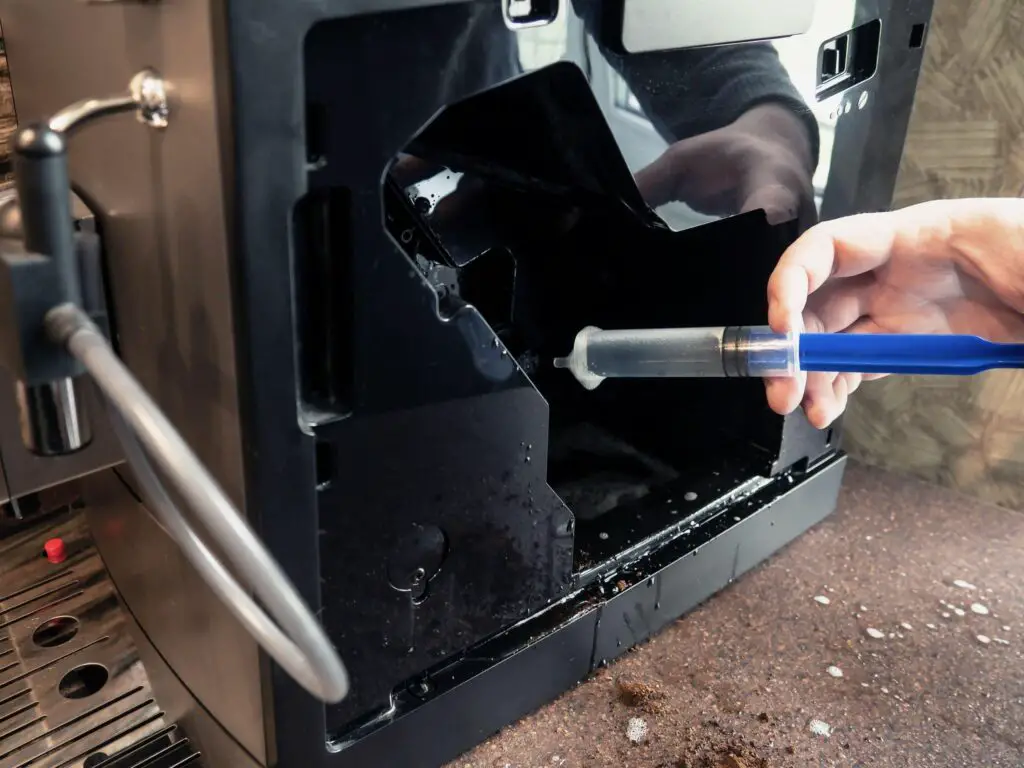Are you tired of finding leftover coffee grinds in your morning cup of joe? Does your Cuisinart coffee maker have an odd smell that just won’t go away? Well, fear not, coffee lovers! We’ve got you covered with a comprehensive guide to cleaning your cuisinart coffee maker. From quick and easy tips to deep-cleaning tricks, our guide is designed to ensure you have the freshest, best-tasting cup of coffee daily. So grab a mug of your favorite brew, and let’s get started!
Introduction To Cleaning A Cuisinart Coffee Maker

If you start your day with a fresh cup of coffee, you may own a Cuisinart coffee maker. However, even the best coffee makers require regular cleaning to ensure proper functionality. The buildup of minerals from the tap or bottled water can cause blockages and affect the taste of your coffee, so it’s important to maintain your machine.
Cleaning your Cuisinart coffee maker is easy and can be done in various ways, depending on the model you own. Some machines have a self-cleaning feature that alerts you when it needs cleaning, while others require a manual cleaning process.
To clean your Cuisinart coffee maker manually, begin by running a brew cycle with a mixture of distilled white vinegar and distilled water. This mixture helps to remove any mineral buildup and dust accumulating inside the machine. Wipe down the machine with a damp cloth to remove any remaining mineral deposits before repeating the process with a fresh batch of clean water and vinegar.
For those with the single-serve Cuisinart model, cleaning consists of pouring diluted vinegar into the machine and running a brewing cycle without a filter. Thoroughly rinse the machine and wipe down the exterior with a damp cloth.
Overall, cleaning your Cuisinart coffee maker regularly will not only extend the life of the machine but also ensure that your coffee tastes fresh and delicious every day.
Importance Of Regularly Cleaning A Coffee Maker
Regularly cleaning a coffee maker is crucial for maintaining its performance and ensuring a great cup of coffee every time. Mineral buildup from hard water, leftover coffee grounds, and oils from coffee beans can clog the machine’s internal parts, affecting the taste and quality of the coffee.
Moreover, if not cleaned regularly, the machine can become a breeding ground for mold and bacteria, which can harm the users’ health. Hence, cleaning a coffee maker every two months or after making around 100 cups of coffee is recommended. However, if there are any noticeable changes in the coffee’s taste or smell, it is best to clean the machine sooner. Cleaning a coffee maker is easy and can be done with simple household items like white vinegar and water.
It is important to follow the manufacturer’s instructions for cleaning to prevent damaging the machine. Regular cleaning not only prolongs the lifespan of the coffee maker but also ensures a great-tasting coffee, making it an essential part of the brewing process.
Signs Of A Dirty Coffee Maker
Signs of a dirty coffee maker may not be immediately obvious, but they can affect your daily Java fix. The first sign is when the brewing process takes longer than usual. This means that the coffee maker’s internal parts are clogged with mineral deposits and coffee oils. The second sign is the coffee’s unusual taste or smell. Dirty coffee makers with buildup can harbor bacteria and mold, causing your coffee to taste and smell off. Finally, if you notice your coffee is not as hot as it should be, it may be a sign of clogs in the machine.
To avoid these signs, it is essential to deep clean your coffee maker regularly, especially if you use it daily. Wash the removable parts with dish soap after every use to clean a standard drip coffee maker. Decalcify the machine with vinegar every three months to remove hard water buildup. Finally, make your carafe sparkle again using rice to remove any stubborn debris. Taking care of your coffee maker ensures that it lasts a long time and, most importantly, provides you with delicious coffee every day.
Read more:
- How To Clean A Hamilton Beach Coffee Maker: Step-by-step Guide
- How Often To Clean Coffee Maker? A Guide For Coffee Lovers
- Keurig Descaling Troubleshooting: Ways to Fix Keurig Descale Light Won’t Turn Off
Effects Of Hard Water On Coffee Maker
Hard water can have negative effects on the performance and lifespan of your Cuisinart coffee maker. Hard water contains minerals such as calcium and magnesium which can build up in the machine over time. This buildup can clog the internal components of the coffee maker and reduce the flow rate of water. Consequently, this affects the brewing temperature and affect the taste of coffee.
If the mineral buildup is left untreated for prolonged periods, it can also cause irreparable damage to the machine. The buildup can lead to leaks and damage to the heating elements.
Regular cleaning of the coffee maker can prevent buildup and prolong its lifespan. Besides, it’s advisable to use a water softener or a filter to remove minerals from water. Replacement of filters regularly is also essential because they can accumulate minerals over time.
In conclusion, using hard water to make coffee can negatively impact the taste and performance of your Cuisinart coffee maker. Regular cleaning and use of a water softener or filter can remedy these issues and ensure the machine lasts longer.
How Often To Clean A Cuisinart Coffee Maker?
Cleaning a Cuisinart coffee maker is essential to ensure the machine performs well and maintains its longevity. So, how often should you clean your coffee maker? It is recommended to clean a Cuisinart coffee maker at least every six months to avoid mineral buildup that can harm the machine and impact the temperature and taste of your coffee. However, for those who use their coffee maker more frequently, cleaning the machine every three months is advisable.
Some Cuisinart coffee makers come with an automatic Clean button that lights up to alert the user when it’s time to rinse through the system. However, for models that don’t have this feature, one can indicate the necessity of cleaning the machine when coffee temperature drops, or the resulting flavor tastes unusually bitter. So, to ensure that your coffee maker lasts longer and brews tasty coffee consistently, clean it at least every six months or every three months for heavy users.
By following the recommended cleaning procedures from the manufacturer’s manual or other reliable sources, like vinegar and hot water, you can ensure your Cuisinart coffee maker’s good performance for a long time.
Auto-clean Button And Self-cleaning Program

The Cuisinart coffee maker comes with an Auto-Clean button and a self-cleaning program, making it easy for users to maintain their machine. The Auto-Clean button flashes to notify the user when the machine requires cleaning. To clean the Cuisinart coffee maker, all one needs is a descaling solution made up of vinegar and water in a 1:2 ratio. The mixture should be poured into the coffee maker’s water tank, ensuring that it’s filled to the maximum line. Press the CLEAN button, which is the same button that flashes when it’s time for cleaning, and hold until the light is steady. The cleaning cycle takes about 30 minutes, and the machine beeps to signal the end of the cycle. After the vinegar and water mixture is poured out, the user should rinse out the reservoir and refill it with fresh water.
The self-cleaning program is also convenient because it has an LED light that flashes to notify the user when to clean the machine. The user only needs to add water and turn on the self-cleaning program, which takes about an hour to complete. The machine is then ready for use again. It’s recommended to clean the Cuisinart coffee maker every six months or more regularly, depending on how frequently it’s used and how hard the water is. Regular cleaning ensures that mineral buildups don’t harm the machine or impact the flavor and temperature of the coffee. The Auto-Clean button and self-cleaning program make maintaining the Cuisinart coffee maker stress-free and straightforward.
DIY Descaling Solution For Cleaning Coffee Makers
One of the most effective and affordable ways to clean coffee makers is by making a DIY des solution using vinegar and water. This solution is useful for those with hard water, as it down mineral buildup inside the. Mix equal parts white vinegar and water to make the solution and pour it into the coffee maker’s water tank. Ensure that the tank is filled to the maximum line. Then, run the machine on a cleaning cycle. If the machine doesn’t have a cleaning program, run a normal brewing cycle with the vinegar and water mixture.
Afterward, run a cycle with plain water to rinse out the vinegar solution. It’s important to note that vinegar can kill bacteria, but it can also leave a residue, which can affect the taste of your coffee. Therefore, it’s best to follow up with a cycle of plain water and use a damp cloth to wipe down the machine’s surfaces. Descaling your Cuisinart coffee maker with this DIY solution every three to six months will ensure that your machine is free of mineral buildup and coffee residue and gives your coffee the best flavor possible.
Steps To Clean The Cuisinart Coffee Maker
8 Steps to Clean the Cuisinart Coffee Maker
1. Remove the charcoal water filter from the coffee maker.
2. Fill the water reservoir with a solution of 1/3 white vinegar and 2/3 water.
3. Pour the mixture into the reservoir, taking care not to exceed the maximum water line.
4. Press and hold down the “Clean” button for 3 seconds to start the cleaning process.
5. Turn on the coffee maker and wait for it to finish running through its self-cleaning cycle.
6. Wipe away any condensation that may have formed to prevent unwanted vinegar hints in future cups of coffee.
7. Clean the machine every two months or after brewing 100 cups of coffee.
8. If your machine doesn’t have a self-cleaning feature, descale it every 3-6 months or more often if you have hard water.
Following these easy and simple steps ensures that your Cuisinart coffee maker stays in good condition and continues to make great-tasting coffee. Regular cleaning and maintenance are essential for keeping your coffee maker running optimally so that you can enjoy delicious cups of coffee every day.
Cleaning Of External Surfaces Of Coffee Maker
Cleaning the external surfaces of your Cuisinart coffee maker is an essential part of its maintenance. You should clean it at least once a month to maintain its shiny look. Begin by unplugging the machine and waiting for it to cool down. Then remove the carafe and the filter basket and wash them with warm soapy water. These parts can also be placed in the top rack of the dishwasher. Use a lightly damp dishcloth to wipe the external surfaces of the coffee maker, taking extra care around the base of the machine where electrical heating components are located. Be careful not to use too much water and avoid using abrasive cleaning agents that can scratch the surface. You can use a glass cleaning solution to get extra shine if desired. Once you have cleaned all the external surfaces, allow the machine to dry thoroughly before plugging it back in.
In conclusion, cleaning the external surfaces of your Cuisinart coffee maker is an easy task that should be done regularly to maintain both the appearance and functionality of your machine. By following these simple steps, you can ensure that your coffee maker continues to provide you with a great tasting cup of coffee for many years to come.
FAQ
Q: How often should I clean my Cuisinart coffee maker?
A: To ensure that your coffee maker continues to make great-tasting java, it is recommended to clean it every two months or after brewing 100 cups of coffee. However, if you notice any changes in flavor or smell, it’s best to clean the machine sooner.
Q: How do I know when to clean my Cuisinart coffee maker?
A: If your machine has the auto-clean program, a little CLEAN light on the front will start flashing when it’s time for cleaning. Otherwise, you can tell that your coffee maker needs cleaning if it takes too long to brew coffee or if it’s making unusual and loud noises.
Q: How do I clean my Cuisinart coffee maker?
A: To begin cleaning your machine, remove the charcoal water filter and fill the water reservoir with a mix of 1/3 white vinegar and 2/3 water. Pour the mix into the reservoir and press and hold the Clean button for 3 seconds to start the cleaning process. After the cycle is finished, run the machine with cold water for one cycle.
Q: Can I use commercial descaling solutions for cleaning my Cuisinart coffee maker?
A: Yes, you can use commercial descaling solutions from the market. However, if you prefer a more natural and cost-effective solution, you can mix vinegar and water in a 1:2 ratio to create your own descaling solution.
Q: What are the benefits of owning a Cuisinart coffee maker?
A: A Cuisinart coffee maker provides a quick and easy way to make your favorite hot beverages. It is also space-saving and comes with features such as auto shutoff, adjustable temperatures, and heating plates that keep the brewed coffee warm for up to two hours.
Conclusion And Helpful Tips For Maintaining A Clean Coffee Maker
In conclusion, cleaning and maintaining your Cuisinart coffee maker is essential for continued performance and the longevity of your appliance. By regularly cleaning the removable parts and descaling the machine, you can ensure that it operates efficiently and produces great-tasting coffee. Remember to use high-quality beans and check the water level to ensure the best possible coffee brewing experience.
To maintain a clean coffee maker, it is recommended to clean the K-Cup holder after every use or at least once a week. Additionally, wiping down the exterior of the coffee maker with a soft cloth or sponge to remove any dirt or grime that may have accumulated is important. Furthermore, it is advisable to replace the charcoal water filter every two months or after brewing 100 cups of coffee, and to perform a thorough cleaning if you notice any changes in flavor or smell coming from your coffee.
By following these simple steps, you can keep your Cuisinart coffee maker in tip-top shape and continue brewing delicious coffees every time.

James Robinson loves coffee and blogging all about coffee. His blog is full of informative posts about the best ways to enjoy coffee and the many different types of coffee out there. He also shares recipes for delicious coffee-based dishes, and his followers can always count on him to offer tips on how to improve their coffee-making skills.
